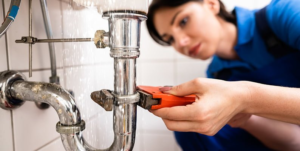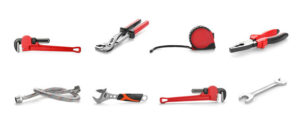Plumbing is a trade that requires both technical know-how and customer service skills. Plumbers work with customers to identify their problems, provide estimates for services and answer any questions.
Plumber Lexington KY often work on new construction projects, collaborating with builders and architects to design and install the necessary plumbing infrastructure. They must also be knowledgeable about local codes and regulations.

Plumbing is a highly technical career that requires a broad range of skills. Plumbers are responsible for repairing and installing water pipes, toilets, showers, faucets, garbage disposals, and other fixtures. They must have the stamina to perform physically demanding labor, as well as the ability to solve complex problems quickly and accurately. Plumbers also need to be familiar with a wide variety of tools, including wrenches, pipe cutters, soldering equipment, and diagnostic tools such as leak detection devices and drain snakes. Plumbers must also understand and adhere to all relevant safety protocols when working with hazardous materials or in confined spaces.
The duties of a plumber can vary depending on the type of work being performed. For example, residential plumbers focus on repairing and installing plumbing fixtures in homes and other small buildings. Commercial plumbers, on the other hand, typically handle larger-scale projects in office buildings, hospitals, schools, factories, and other large commercial or industrial facilities. In some cases, plumbers may be required to travel to different locations to complete their job duties.
Regardless of the type of project, all plumbers must be proficient in reading blueprints and architectural plans in order to properly install plumbing systems according to building specifications. This includes laying out piping, connecting fixtures, and ensuring that all plumbing adheres to local building codes and regulations. In addition, some plumbers may be involved in new construction projects from the outset, working with architects and builders to design plumbing infrastructure before construction begins.
When working on sewage systems, plumbers must be aware of the potential risk of infection. This is because human waste contains microbes that can cause serious diseases, such as cholera, typhoid, hepatitis, and polio. Plumbers should always wear protective clothing and gloves when handling sewage system components to avoid exposure to these harmful pathogens.
Many plumbers are employed by private companies, but some are self-employed contractors. In either case, plumbers must be willing to work on call during evenings and weekends in response to emergency plumbing issues. This can be a stressful and unrewarding aspect of the job, but it is necessary in order to provide the public with consistent service.
Education and Training Requirements
The qualifications needed to become a plumber vary from state to state, but typically a high school diploma or equivalent is the minimum requirement. Many plumbers pursue further education through vocational or trade schools that offer programs specifically tailored to the field. These courses cover topics like local plumbing codes and regulations, blueprint reading, and safety practices. Some people also choose to gain hands-on experience by working as an apprentice for a licensed plumber. This usually lasts from four to five years and combines classroom instruction with paid on-the-job training. Some apprenticeships are sponsored by unions or employers, while others are offered through independent training companies.
Once a person has gained enough experience, they can apply for a license to work independently. This process varies by jurisdiction, but usually involves passing a written exam and a practical examination. Many states require a background check as well. Plumbers often obtain additional certifications to improve their skills and marketability. These may include a certificate in drain cleaning, water heater installation, and gas pipe repairs.
Plumbers can find employment in a variety of settings, from residential to commercial and industrial. In new construction projects, plumbers are involved from the beginning stages and must follow blueprints to design and install the necessary plumbing infrastructure. In older buildings with outdated or broken systems, they may need to troubleshoot and repair faulty pipes and fixtures. In all settings, plumbers must be comfortable working with a variety of tools and materials and be able to adapt to changing conditions.
Some cities and counties also require plumbers to complete a certain number of continuing education hours in order to maintain their licenses. These requirements can be found in the individual city or county’s licensing guidelines. Plumbers can also choose to seek out professional memberships or affiliations to demonstrate their commitment to the industry and stay up-to-date on the latest techniques and standards. For example, the National Inspection Testing and Certification offers professional certifications for plumbing inspectors. These credentials are not required to be a plumber, but can make one more attractive to prospective employers and clients.
Work Environment
The work environment for a plumber can vary depending on the type of projects they are working on. In residential settings, plumbers often work directly in people’s homes or apartments. This can involve working in tight spaces and navigating around furniture, appliances, and other household items. Interacting with customers is also common, as plumbers explain their repair options and provide estimates for services.
Commercial and industrial buildings present a different workplace environment for plumbers. These settings may include office buildings, retail stores, restaurants, hospitals, factories, and power plants. In these environments, plumbers often focus on larger-scale plumbing systems that serve multiple occupants. These systems can include water supply lines, drainage systems, and fire sprinklers.
Many plumbers are employed by large plumbing companies, but there are also some who are self-employed and work on a freelance basis. This option can provide more flexibility in scheduling and choice of projects, but it also involves greater risk of injury or exposure to hazardous materials.
Job Outlook
As baby boomers reach retirement age, demand for skilled trade workers is projected to grow. This includes plumbers, pipefitters and steamfitters. As a result, the job outlook for plumbers is very positive.
This is especially true if you choose to specialize in an area of the profession such as installing green plumbing systems or working with high-end fixtures. These specializations can help you stand out from the competition and secure a steady stream of work.
In addition to repairing leaky faucets and jammed toilets, plumbers are called upon to install water heaters and other major appliances, including gas or electric dryers. This can lead to higher pay compared to other maintenance-type jobs.
Plumbers can also find work in new construction. Their skills are needed to make sure a structure’s plumbing meets building codes, stays within budget and works well with the location of other features such as electrical wires. Master plumbers on construction sites are often involved in developing blueprints that show the placement of all pipes and fixtures.
In addition, many plumbers have started their own businesses. This can be a lucrative option that allows them to control their hours and work environment. It can also give them a sense of accomplishment and freedom. However, if you opt to be self-employed, it’s important to connect with fellow professionals and keep current on industry trends. This can be done by joining a professional plumbing association that offers networking opportunities, training resources and career advancement initiatives.
The average American works until they are in their 60s, so it’s important to enjoy your work and have a good work-life balance. This is particularly important if you plan to retire early. In general, people who enjoy their jobs have lower stress levels and feel more satisfied with their careers than those who don’t.
While the job satisfaction level of plumbers varies depending on where they live and the type of work they do, on average, this occupation offers good prospects for advancement and pay. In fact, plumbers earn a higher salary than many other trade workers such as electricians and HVAC technicians.








